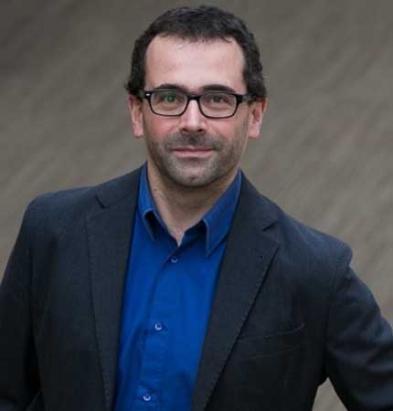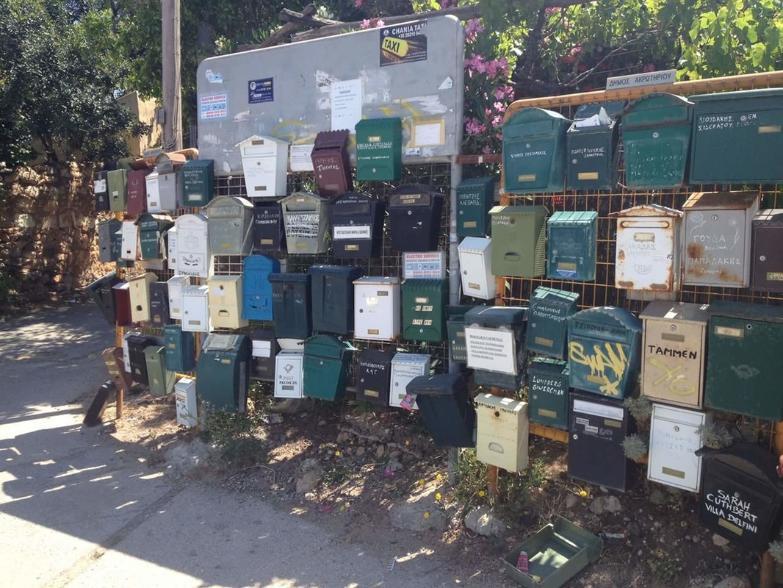Smart Cities, blockchain and cryptocurrencies, and the Eircode project with Dr. Gianluca Miscione, School of Business.

Gianluca Miscione
Assistant Professor
UCD School of Business
UCD Profile
Q: Your work is interdisciplinary – technology, geospatial, sociology, informatics – what would you say is the underlying common theme and why is it important to you to work in this interdisciplinary way?
A: I hear this question from time to time. I see my research as empirically based on several empirical domains (mainly health care, urban and regional planning, authentication) but I always look at the same aspects: the interplay of organising processes and IT. This also explains my specific interest in technology as actually applied, rather than designs, potentials, etc.
Q: You did some research into the early stages of the Eircode project – what were you interested in learning and as it has developed, how has it turned out?
A: Before moving to UCD, I was in the Netherlands working on Spatial Data Infrastructures in Europe and India. SDI are collection of large information systems that handle geospatial data to manage cities, regions, forests, water basins, roads, etc. The EU SDI is called INSPIRE and is the data bedrock for continent wide environmental policies. Postcodes are an element of SDI and, since there was the opportunity to follow the introduction of a new postcode in Ireland, we took the opportunity to study a piece of infrastructure in the making.
The interesting thing of that case is that, despite the public narrative, a main driver seems to have been to map all real estate properties in the country. The CSO was interested in another nation-wide unique identifier (beside PPS number and business registry) and the Troika was pushing for a property tax, which is of course impossible if you don’t have a database of properties. The Irish postcode is characterized by an extremely fine granularity to address each letter box. Since it identifies each household, it’s private data according to EU privacy laws. The Irish data protection agency red flagged it, and it seems to have been sidelined in the policy process of designing, bidding and approval.

“The EU SDI is called INSPIRE and is the data bedrock for continent wide environmental policies. Postcodes are an element of SDI and, since there was the opportunity to follow the introduction of a new postcode in Ireland, we took the opportunity to study a piece of infrastructure in the making.”
– Dr Gianluca Miscione
Q: You’re interested in technological innovations like the Internet of Things, sensors and data infrastructure. How can these things make cities more sustainable?
A: I see two trends in relation to cities: smartcities (usually emphasizing technology) and citizen science (emphasizing people as producers and users of data). With colleagues in Denmark and Sweden, we have been active within the main European scholar body for organization studies (www.egosnet.org) to bring those lines of research and practice to the same table. Going more specifically into applications, I do not expect major city transformations because of IoT or sensors alone. What I see missing here is attention to the actual organising processes in practice. Without focussing on this, we will keep hearing about potentials, promised futures, tall tales, etc. until research grants expire, we forget about the promises and we move on to the next wave of innovation.
Q: In one of your papers you mention a concept called algorithmic governance, where you say, “the utopia is to create cities that self-regulate like a thermostat”. Can cities be automated?
A: I think that the thermostat makes for a good analogy. It’s usually used to explain cybernetics, the theory of communication and control, which also found tentative application in Allende’s Chile in the 70s. Cybernetic ideas as self-regulation came up and failed again and again. So, do I dislike thermostats? Not at all, but I see them as collection of technologies (radiators, thermometers, gas pipes, actuators) with broader attachments to banks (standing orders for bills), environment (CO2 emission regulations), welfare at home and so on.
When this working arrangement we call the thermostat starts being projected as utopia of self-regulating cities, that is where I invite people to get out of their pipe-dreams and look at the actual organising processes (who does what, when, how and not least why!). This is Sociology of Technology 101.
Q: Tell us a little bit about smart contracts. How could they be used?
A: Smart contracts have been promising a lot along the cybernetics vision of self-regulating systems. After many years, I still haven’t seen much substitution of humans with algorithmic regulation. As with the thermostat, they can automate specific well-defined sequences of action, but the thermostat is not and should not be Skynet.
“Crypto/blockchain finds its root in cyber-libertarian values. This is quite evident not only in the behaviour of some prominent figures involved, but also inscribed into how the technology works.”
– Dr Gianluca Miscione.

Q: You also research a lot on financial and currency technologies like blockchain and cryptocurrencies. What kind of social impact do these currencies have?
A: Crypto/blockchain finds its root in cyber-libertarian values. This is quite evident not only in the behaviour of some prominent figures involved, but also inscribed into how the technology works. The way I see this phenomenon – a rejection of organisations while championing individual empowerment – has had the far-reaching effect of alienating a larger user base. This is because there were not enough efforts to make the technology useful and usable, provide some guarantees to customers, liaise with banks in meaningful ways, engage regulators and so on. Leading figures have even been steering away from universities. So, these are example of the impacts that failed to happen because of the values underlying crypto.
In practical terms, I see two main stories: crypto’s big push for substituting organisations and (corrupt) politics with technology gave birth to a consensus technology which performs some organisational functions in a novel way. This architecture is being used elsewhere with some success (global supply chain, land registries, among others). On the negative side, the self-referential/self-accountable value of crypto led them to ignore the externalities of running their consensus algorithm at scale: the huge environmental impact of ‘proof-of-work’ to authenticate transactions.
Q: Political ideologies are often invisible drivers of technological innovations, with subcultures and characters with unusual motivations. What kinds of ideologies are behind blockchain and cryptocurrencies?
A: Well spotted! Especially in the crypto world, you never miss odd figures and outlandish behaviours. It’s been a long carnival. A colleague from New Zealand is leading the effort of trying to map the values systems of crypto with Q-methodology. I hope that work gets published soon, not least because it makes this very self-referential phenomenon more intelligible from the outside.

